Walking with Wildflowers II
Butter And eggs
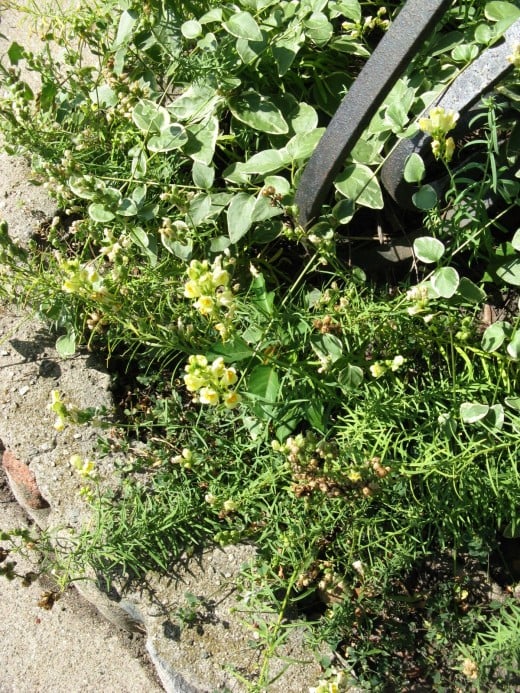
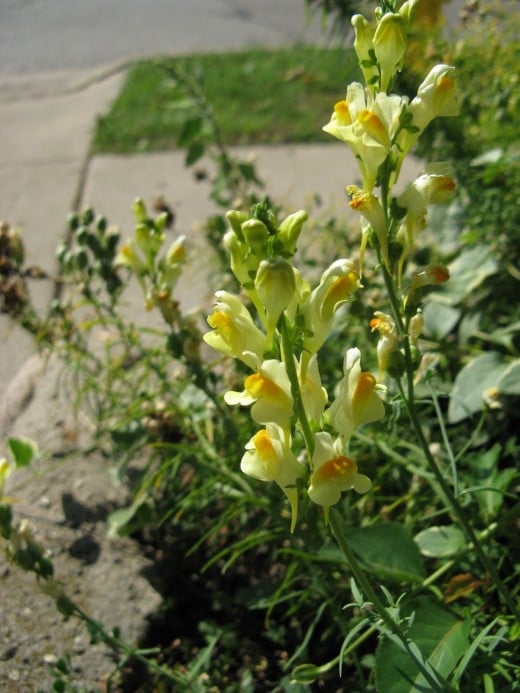
Butter and Eggs or Toadflax- Linaria vulgaris
Butter and eggs, also know as toadflax, gets it’s name from the yellow petals, the butter, and the orange petals, the eggs. Butter and eggs can be found growing along the roadside, in open fields and waste places. Although it is native to Europe, it has become naturalized in the northern two thirds of the United States although it is more prevalent in the east than in the west. It was brought here by early settlers because of its many uses. It was often used as an ingredient in skin lotions, to treat constipation and the juice from the stems was mixed milk and uses as a poison to kill flies around the barns.
Butter and eggs are a perennial that bloom from May to October. The flowers are born on a terminal spike and and the plant resembles a small snapdragon.It ranges in size from 1 to 3 feet. Each flower is about 1 inch long and has a yellow upper lip with an orange bottom lip. Because the flowers tend to be tightly sealed by the under lip, they can only be pollinated by the strongest insects, usually honey bees and bumble bees. The fruit from this plant is round and filled with many small seeds.
I have gathered seeds from this plant and hope to start them in my light stand this winter. By spring, I hope to have plants big enough to set out side.
Field Bindweed
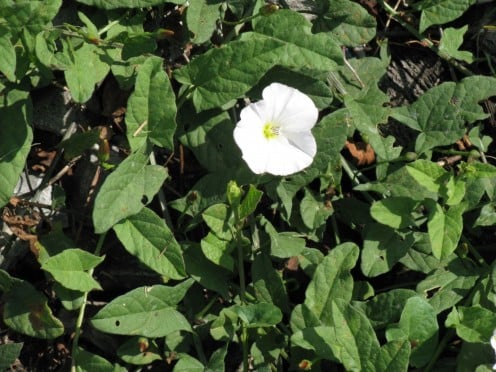
Field Bindweed- Convolvulus arvensis
Field bindweed is a deep rooted perennial vine that is considered a noxious weed. It is also called wild morning glory, creeping Jenny, and European bindweed. As with many other plants considered noxious weeds, it is an immigrant from Europe. One of the reasons, that it is such a pest, is that it grows everywhere. Field bindweed makes it self at home anywhere except swampy ground. It likes all kinds of soil and conditions, although it grows best in fertile, dry soil. Field bindweed is found growing through out the U. S. It can be found not only as a trailing vine but will grow of fences and overgrow other plants. Field bindweed was first found growing in Virginia in 179.
The trumpet shaped flowers of the bindweed are around and inch in diameter and resemble small morning glories. And like morning glories, they open during the day and close as the sun sets. They range in color from white through shades of light pink to light purple. Once this plant gets going it is extremely hard to control. It has an immense root system that can sink down over ten feet into the soil and store a three year food supply within. It also sends out a large number of lateral roots. These lateral roots help to anchor the vine and if separated from the plant will start new plants of its own.
Blackeyed Susans
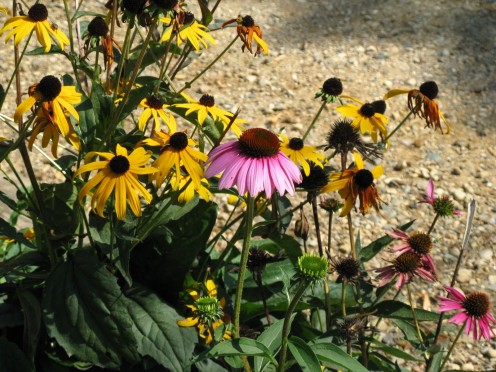
Black eyed Susans-Rudbeckia hirta
Black eyed Susans is perennial flower native to the United States and Canada.
It is used extensively in prairie restoration programs and is widely used by livestock as forage. Where ever these plants grow in abundance, it is an indicator of a prairie that is in good health. The black eyed Susan gets its scientific name from a Swedish father and son, O. J. Rudbeck (1630-1702) and O. O. Rudbeck (1660-1740).* Rudbeckias like to grow in full or partial sun and in most types of soil, including dry, moderately moist to wet lands. They can be found growing in prairies, along the roadside and may even find their way into a city lot (I know mine did).
Black eyed Susans can be eithera herbaceous biennials or a perennial. They often reach heights from between 2 and 10 feet tall with simple branched stems, one flower to a stem. Each flower is 2-3 inches in diameter with a prominent dark colored seed head surrounded by rays in shades of yellow or orange. The flowers are in bloom from June to October.
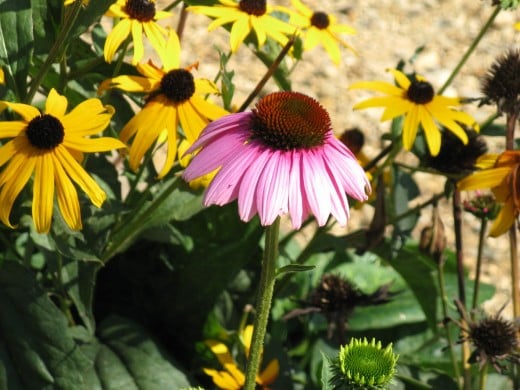
Purple Coneflowers-Echinacea purpurea
Purple Conefloweris a native perennial. Its scientific name Echinacea is derived from the Latin for hedge hog or sea urchin. This is because of the many little spines found on the surface of the seed head. It can be found growing though out the U.S. It can be found growing wild in the eastern part of the country, the Midwestern prairies as well as in the south east and across Texas. The purple coneflower is pollinated by butterflies and bees. Its habitats include dry open woods, prairies and barrens. It prefers dry, well drained loamy soils and full sun. It can thrive in dry soil and full sun but does not grow well in shade.
This flowering plant can reach heights of 4 ft and reach a width of up to 2feet. Purple coneflowers begin to bloom in May or early June. The flowers appear singly on long stems, they have a brownish purple central dome surrounded by a ray of light purple petals. The flowers have been used by Native Americans as a medicinal tea. The tea made from the flowers has been shown to give a boost to the immune system and can be found in health food stores and pharmacies.
Dandelion
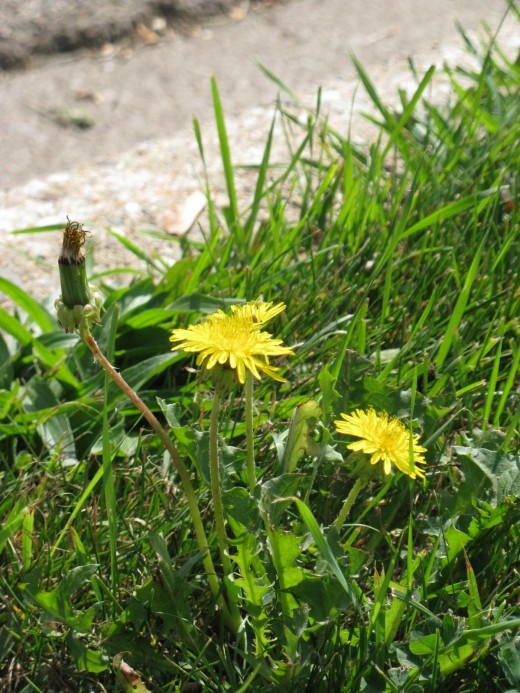
Dandelion- Taraxacum officinale
The relationship between humans and dandelions is a love-hate kind of thing. If you are a lawn enthusiast, you hate it. If you are an herbalist, you love it. A weed, a medicine, it’s all a matter of prospective. The name is from the French, dente de lion, and describes the shape of the leaf. It has been said that the serrated edges of the leaf resemble a lion’s teeth when it snarls. Its other common names include Lions-tooth, Blow-ball and Cankerwort. It is a native of Eurasia but has been naturalized through out the temperate regions of the world. It grows absolutely everywhere and is not fussy about soil conditions and amount of sun it receives. Dandelions are extrememly hardy and will be found growing absolutely everywhere; in openings in deep woods, in cultivated fields, from rocky hillsides to fertile gardens and lawns
The dandelion plant is a hardy perennial with a thick, fleshy taproot. It can grow either from seed or from the root and root segments. The plant blooms from spring until fall and seedlings can appear through out the spring and summer but appear most abundant in the fall. The leaves appear as a rosette on the grounds surface. They have a toothed edge and reach lengths of 10 inches. The flowers are bright yellow and although born singly on hollow stems there may be several stems per plant. These stems can be any where between 3 and 10 inches long. Each flower becomes a spherical “clock” and contains hundreds of single-seeded fruits called achenes. The seeds are attached to silky parachutes and are easily disbursed by the wind. The seeds can be carried for miles before floating back to earth,
Dandelions have been a valued addition to both the kitchen cupboard and the medicine chest dating back to the ancient Greeks and Romans. Dandelion leaves are very nutritious and are often gathered and cooked like spinach or added to a salad. The deep tap root, like chicory, has been used as a coffee substitute. The flowers of the dandelion are gathered and made into a delicious wine. The dandelion is also valued for its curative qualities. It is used as part of spring tonics, as a diuretic and to cleanse the liver.
Everlasting Pea
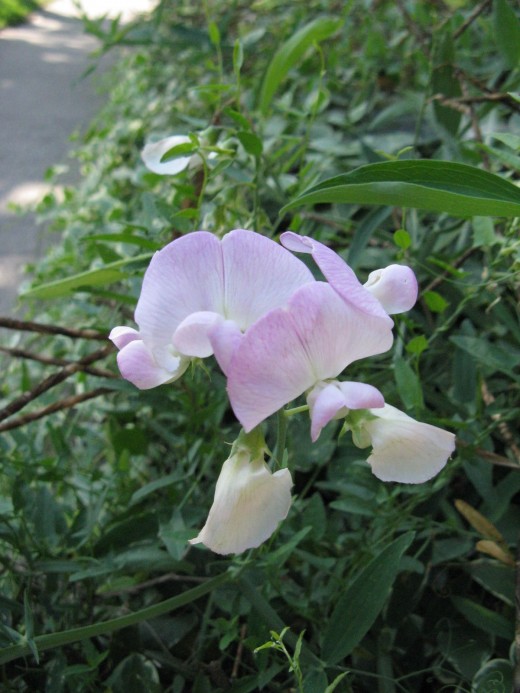
Everlasting Pea-Lathyrus latifolius
The everlasting pea is a long lived perennial vine. Native to Eurasia, the everlasting pea has adapted to the regions of the Northeast as well as to the states that border the Great Lakes. The everlasting pea prefers full sun and moderate to well-drained soils. Although considered a weed in some areas, the everlasting pea provides excellent erosion control. It is not only low maintenance when established but is also a very attractive plant for covering erodible areas. When it is planted with grasses and other legumes, it can inhibit the invasion of less desirable species. It is provides cover for wildlife and can prevent woody encroachments of the roadsides.
Everlasting pea vines range from 3-6ft. Like other peas, it can climb nearby vegetation with its twining tendrils. Where there is support, this plant can reach heights between 5-7 feet. Where there is no support, the everlasting pea will form dense mats of between 18 and 30in. deep. Young plants will flower only slightly by the second year but by the fourth year they bloom profusely. Although it takes three years for the plants to become established, once they are in, they are in. The flowers are produced in large clusters of 4-10 flowers. They range in colors from white, through pink and light purple. Once in bloom, the flowers will continue to bloom through out the summer and into the fall. The flowers are approximately ¾ of an inch across and resemble the flowers of other members of the pea family. Unlike sweet peas, they are not scented.
Moth Mullein
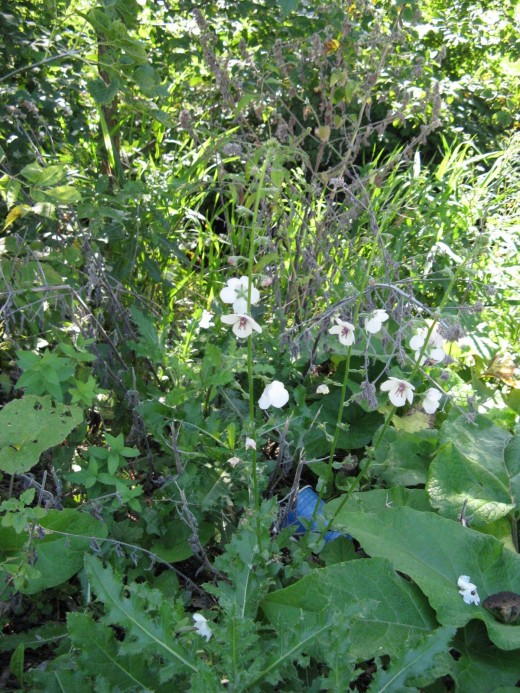
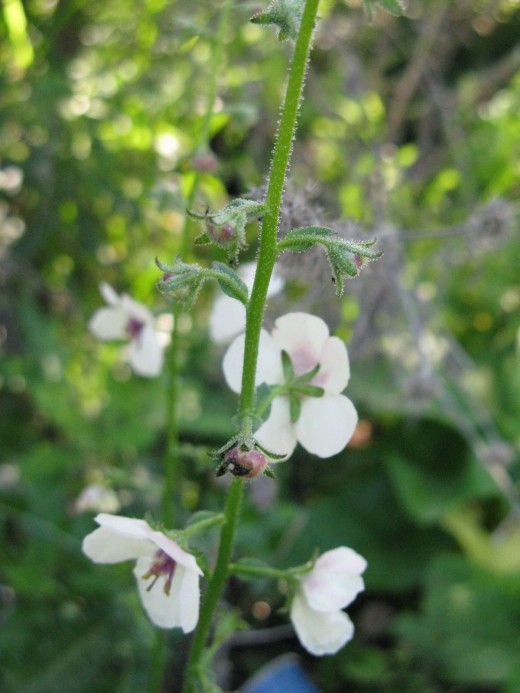
Moth Mullein-Verbascum blattaria
The moth mullein, a close relative of the much larger common mullein, prefers to live along roadsides, old fields and waste places. It is native to both Europe and Asia. But as with many of our wild flowers, they were brought from Europe only to escaped the gardens and can now be found through out the United States and Canada.
Moth mullein are biennials that do not bloom until the second year. It reaches a height of between 2-4 feet. The delicate flowers are found on the end of a short raceme and can be either yellow, pink or white. The blooms reach a width of about 1 inch. The stamens of this flower are red-purple and are said to resemble a moth’s antenna. It blooms from June to October. Once the flowers have faded, small round seed pods remain.
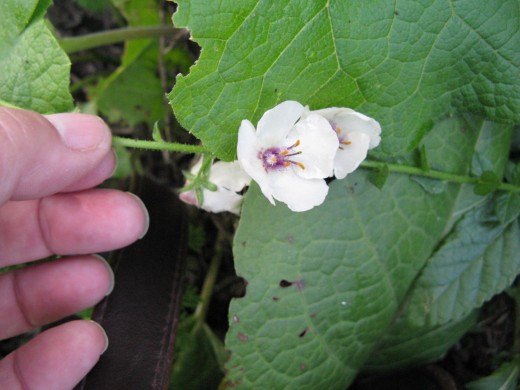
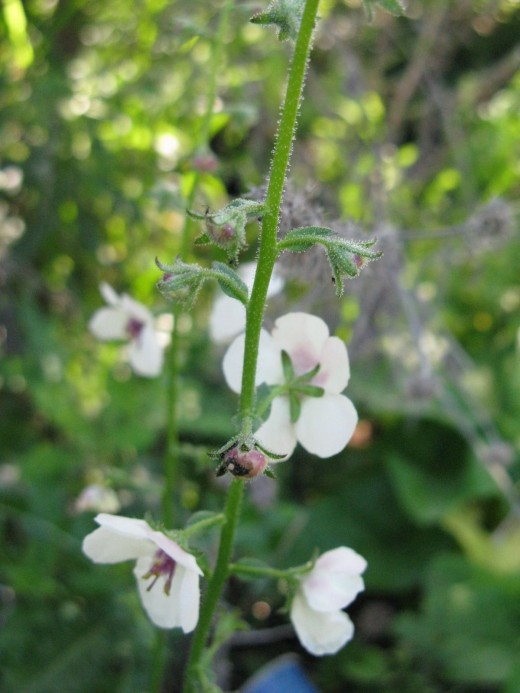
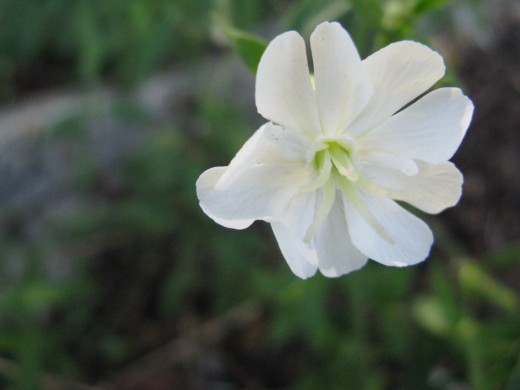
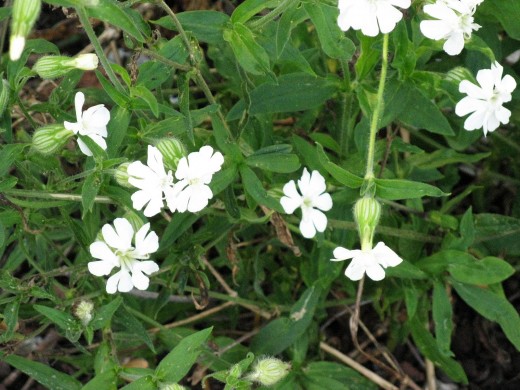
White Campion- Silene latifolia
White campion begin a basal rosette of oval leaves. Sturdy stems with branching crowns emerge from the rosette. These stems reach heights of 1- 3ft. The flowers grow in clusters at the top of each stem and the two sexes grow on different plants. The flowers have a distinctive inflated calyx and five deeply notched white petals. White campions are in bloom from June until September.
Queen Ann's Lace
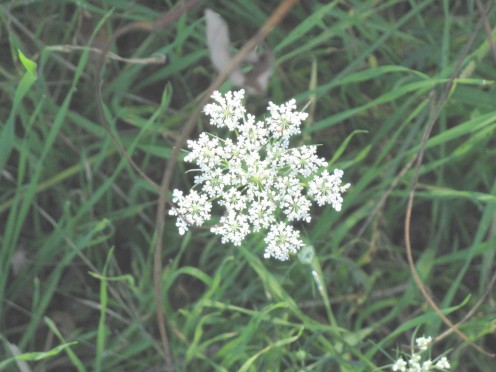
Queen Anne’s Lace- Daucus carota
Queen Anne’s Lace, also known as wild carrot, is a woody biennial that was introduced by European settlers. It was brought because it was considered a valuable medicinal herb. Since the times of the ancient Greeks, it has been successfully used as a contraceptive. It can now be found through out North America. It can be found along roadsides and waste land. Queen Ann’s Lace is considered a noxious weed by the U.S. Department of Agriculture and many state agencies as well.
Queen Anne’s Lace starts as a rosette of leaves the first year. In its second year, it sends up a stalk that can be any where from 105ft. This stem is topped by a single umbrella of small white flowers. Each flower is attached to the stalk by its own individual stem. At the center of most umbrelles is a single red flower. This is the plant’s way of attracting the insects necessary for pollination. Legend has it that this red flower represents a drop of Queen Anne’s blood that fell while she was making lace in the tower of London.
Mystery Plants
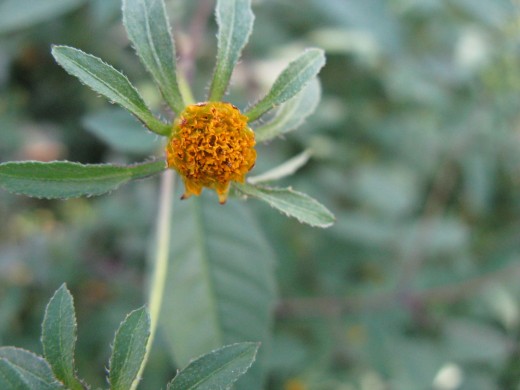
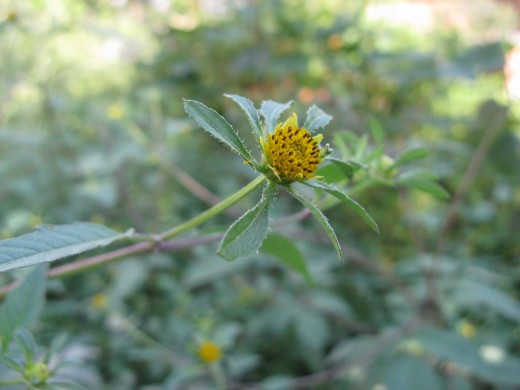
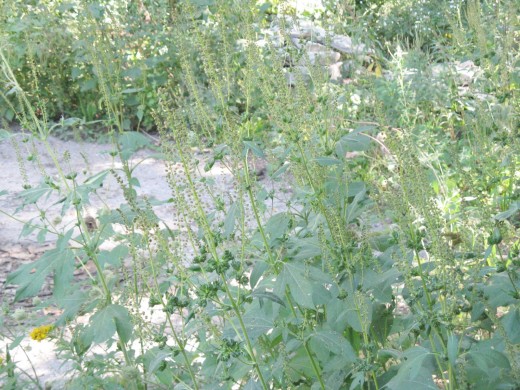
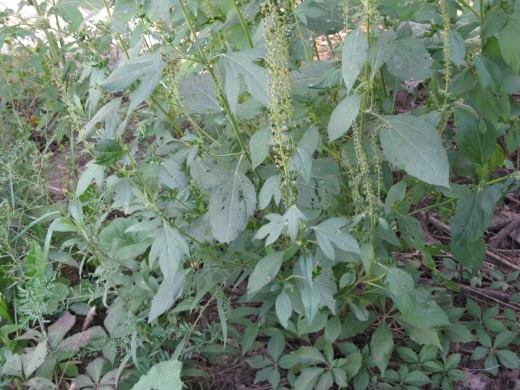
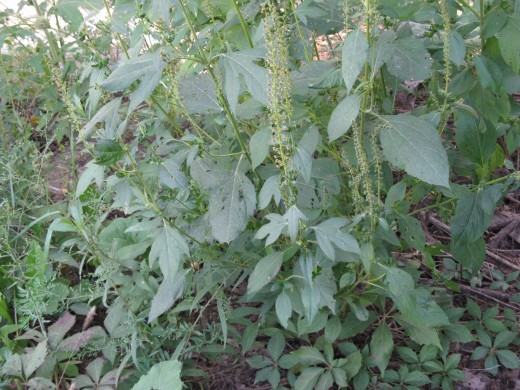
My Mystery Plants
These are plants that I have not been able to identify. The top one, with the green petals(?) is a weed that shows up in my garden but I have never let it get big enough to flower. It is not a very showy plant but up close the flowers are very interesting.
The second one is one that I have never seen before. It can get quiet tall.
If any one know the names of these plants would you please let me know. I have not been able to find pictures or names for either one of them.
Sneaking in Pictures of my garden
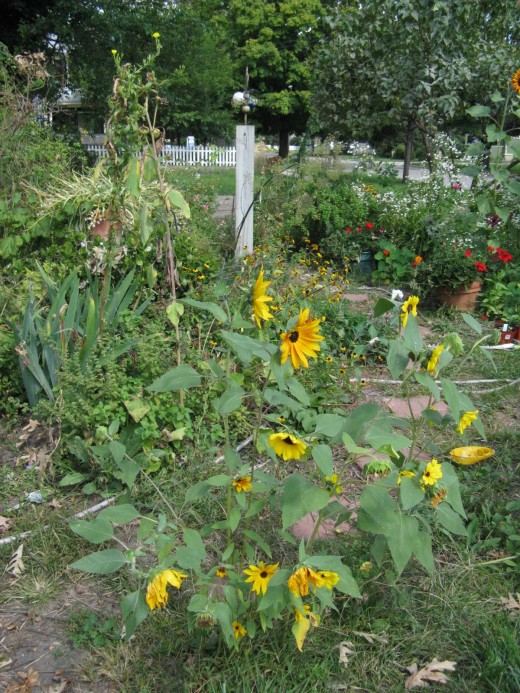
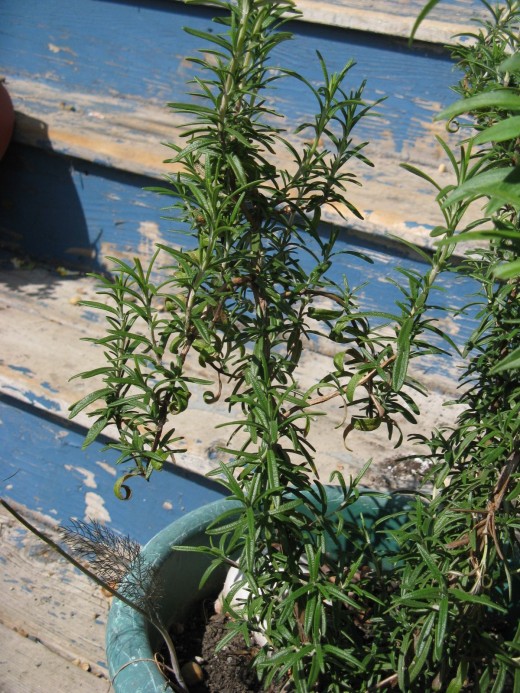
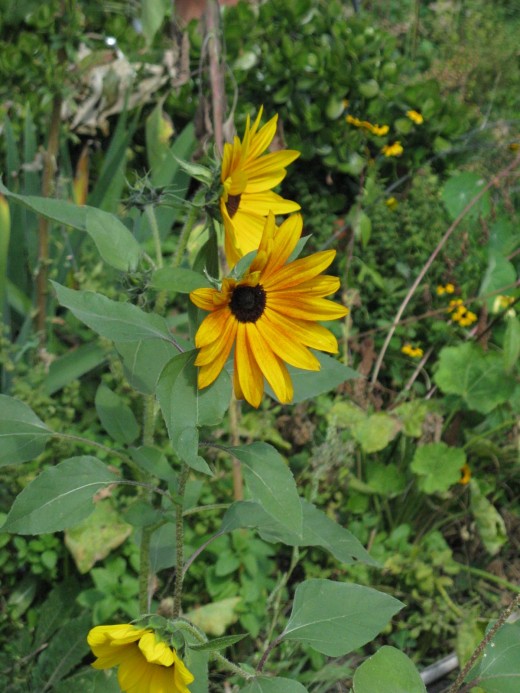
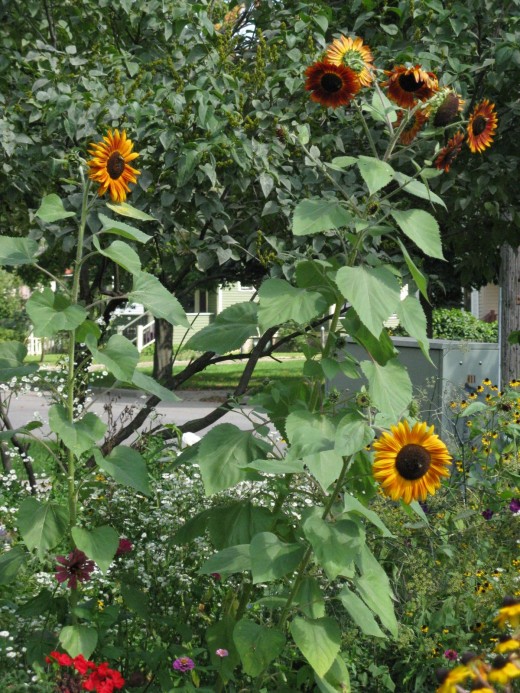
My Front Yard
I couldn't help but sneak in pictures of my front yard. It is a rather wild place because I tend to toss things in and stand back. If they grow, good. If they don't oh well. As you can see most of what I throw in seems to grow quite well.
- A Walk with Wildflowers
Would you like to meet some of my friends? They are the flowers that I see every time I walk the bike trail near my home. I started this summer and am always amazed at how many beautiful wild flowers grow... - Carol's Magic Eight Ball
Most of the people I know have logical brains. They think from point A to point B to point C. My brain on the other hand is like the Magic Eight Ball. When you shake it up and turn it upside down,... - HOW TO BUILD A CHEAP PLANT GROW LIGHT FOR ALL YOUR SEED STARTING NEEDS
Are you an avid gardener like me? Are you already anticipating the arrival of your seed catalogs? I know I am. Do you drool over the big grow lights and trays for starting seedlings but like me don't have... - An Inexpensive Way to Start Seeds
Now that you have read my hub on how to build an inexpensive light stand for your plants, I am going to tell you about a cheap and easy way to start your seeds under the light stand. This is something I...





